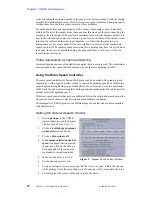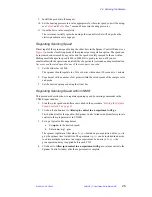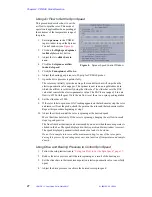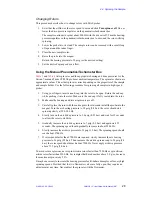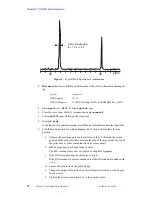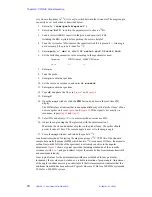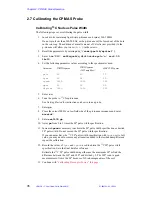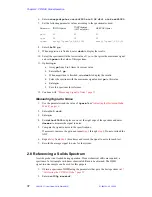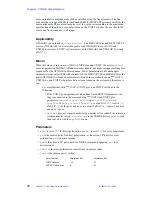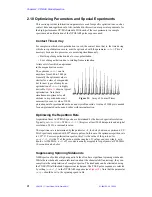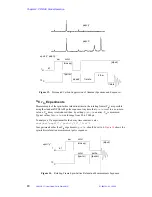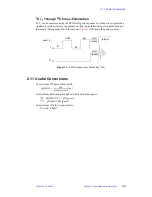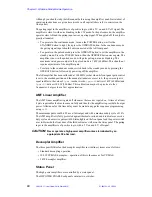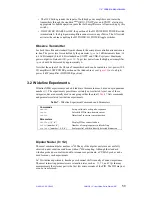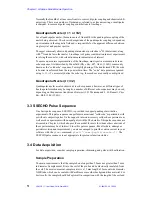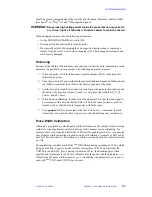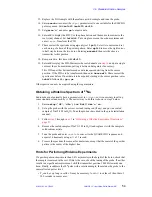
Chapter 2. CP/MAS Solids Operation
39
VNMR 6.1C User Guide: Solid-State NMR
01-999162-00 C0402
Cross-polarization amplitudes should be controlled using the fine attenuator. The fine
attenuator has a range of 60 dB for Inova and 48 dB for MERCURY systems down from the
course attenuator. The coarse attenuator is set to a value corresponding to the maximum
specification of the probe. Cross-polarization on the UNITY requires the use of both the
coarse and fine attenuators (6 db range).
Applicability
XPOLAR1 can be found in
/vnmr/psglib.
The MERCURYplus and MERCURY-VX
version of XPOLAR1 is not interchangeable with XPOLAR1 for
UNITY
INOVA and
UNITYplus systems. UNITY systems can use both XPOLAR1 and XPOLAR by setting
dblvl2=’y’.
Macro
When this macro is run on a
UNITY
INOVA, UNITYplus, and UNITY, the macro
xpolar1
converts parameters for XPOLAR and most other double- and triple-resonance solids pulse
sequences for the XPOLAR1 pulse sequence. Power parameters are left unchanged.
Parameters irrelevant to XPOLAR1 are removed. On MERCURY-VX or MERCURYplus the
macro XPOLAR1 will convert parameters contained in experiments run on
UNITY
INOVA,
UNITYplus, and UNITY when these data sets are loaded on the system and the macro is
run.
For users familiar with
UNITY
INOVA, UNITYplus, and UNITY solids, note the
following:
• If the UNITY power parameters are defined (in an XPOLAR parameter set),
they are converted to the corresponding
UNITY
INOVA and UNITYplus
parameters: (
level1=cppwr
level2=dpwr
level1f=crossp
level2f=dipolr
p2=cntct
tpwrf=tpwrm
) and
dblvl2
is set to
'n'
.
If dblvl2=’y’, both cppwr and dpwr are used. If dblvl2=’n’, cppwr is not used
and dpwr=cppwr.
•
xpolar1
does not convert an arbitrary parameter set for solids. First retrieve a
solids parameter set (e.g.,
xpolar.par
in the VNMR directory
parlib
) and
then convert it with the
xpolar1
macro.
Parameters
•
xpol
is set to
'n'
for direct polarization or
xpol
is set to
'y'
for cross-polarization.
•
pw
is the observe pulse for direct polarization, or the proton 90
°
pulse for cross-
polarization.
pw
is in microseconds.
•
pwx
is the observe 90
o
pulse, used for TOSS and dipolar dephasing,
pwx
is in
microseconds.
•
cntct
is the cross-polarization contact time, in microseconds.
•
tpwr
is the observe power setting .
Spectrometer
Minimum, dB
Maximum, dB
INOVAcpmas
-16
63
MERCURYcpmas
0
63

